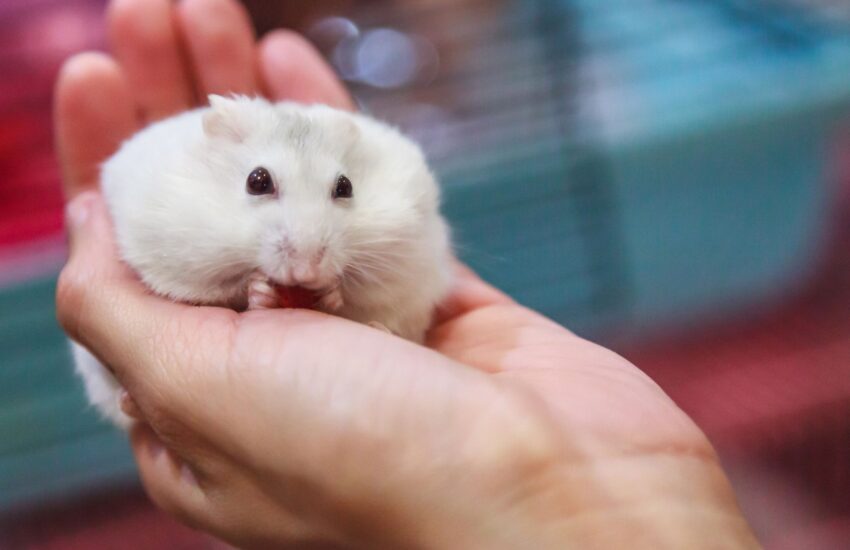Hamster Species Overview
Hamsters are beloved pets and fascinating creatures known for their adorable appearance and playful behavior. This article will explore various hamster species, their unique characteristics, and interesting facts about these small rodents. Below, you will find an overview of the most popular hamster species, tips on hamster care, and more about their habitats and behaviors.
Common Hamster Species
There are several attractive hamster species you can choose from when looking to add a furry friend to your family. Each species has its unique traits and care requirements, making some better suited for certain owners than others. The most common species include the Syrian hamster, Dwarf Campbell’s hamster, Roborovski hamster, and Chinese hamster. Let’s take a closer look at each of them.
Syrian Hamster
The Syrian hamster, often known as the golden hamster, is one of the most popular pet choices. These hamsters are typically about 6 to 7 inches long and come in a variety of colors, including golden, white, and black. They are solitary animals and should be housed individually to prevent aggression. **Syrian hamsters** are known for their playful personalities and will readily interact with their owners.

Dwarf Campbell’s Hamster
Dwarf Campbell’s hamsters are small, around 4 inches long, and very sociable, often enjoying the company of other hamsters when properly introduced. They typically have a stockier build and come in various colors. These hamsters have a cheeky personality, displaying vivid behaviors such as burrowing and running on wheels. If you’re looking for a social little pet that thrives in the company of others, Dwarf Campbell’s hamsters might be an excellent choice.
Behavioral Traits of Hamsters
Understanding the behavior of hamsters is crucial for their care and companionship. Each hamster species exhibits unique behaviors and personalities. Most hamsters are nocturnal, meaning they are most active during the night. Providing a suitable environment with toys and activities is essential for their well-being and can lead to less stress and better interaction.
Nocturnal Lifestyle
Hamsters are naturally nocturnal, which means they tend to sleep during the day and become active at night. This nighttime activity can lead to playful antics, making it a fun time for owners to interact with their pets. Enriching their environment with tunnels, bedding for burrowing, and toys can keep them entertained and satisfied by satisfying their instinctual behaviors, which is vital for their happiness.
Communicating with Hamsters
Communication is essential between hamsters and their owners. They showcase their feelings and emotions through various vocalizations and body language. **Hamsters** will often make chirping or whining sounds when happy or stressed. Paying attention to these signs can help you understand their needs better and enhance your bonding time with your pet.
Care Tips for Happy Hamsters
Taking care of a hamster involves understanding their dietary needs, suitable habitats, and socialization practices. Each species may have slightly different requirements, as we discussed earlier, so researching properly before adoption is critical. Here are some general care tips to help your hamster thrive.
Dietary Needs
Hamsters primarily require a balanced diet consisting of **hamster pellets**, fresh fruits, and vegetables. It’s crucial to ensure their food is specially formulated for hamsters and to avoid giving too many sugary treats. Fresh water should be available at all times to keep them hydrated. Monitoring their intake can prevent obesity-related health issues, especially in less active species like Syrian hamsters.
Habitat Setup
To create a comfortable habitat, choose a spacious cage that allows enough space for them to explore. Adding bedding for burrowing, tunnels for climbing, and a wheel for physical activity is essential. Correct habitat setup will not only make them comfortable but also promote natural behaviors such as napping and foraging. Keeping the habitat clean and regularly maintaining it can help prevent sickness in your pet.
Conclusion
In conclusion, getting a pet hamster can be a rewarding experience as long as you understand the various species and their individual care requirements. Whether you choose a lively **Syrian hamster** or a playful Dwarf Campbell’s hamster, knowing their behaviors and care needs will help strengthen your bond and create a happy living environment. Remember to provide love, attention, and lots of fun to keep your furry friend content!
Key Takeaways
- Familiarize yourself with different hamster species and their needs.
- Hamsters are nocturnal and enjoy activities at night.
- Proper diet, habitat setup, and socialization are essential for their well-being.
- Understanding their communication style can enhance your bond.
FAQ
1. What is the lifespan of a typical hamster?
Most hamster species have a lifespan ranging from 2 to 3 years. **Syrian hamsters** tend to live the longest, often reaching up to 4 years with proper care. Providing a nutritious diet and maintaining a healthy environment can positively impact their lifespan.
2. How to handle a new hamster safely?
When introducing a new hamster, allow them some time to acclimate to their new environment. Start by observing them for a few days without handling them. Once they seem comfortable, approach gently and offer treats to build trust before lifting them. Always support their bodies well during handling.
3. Can hamsters live together?
Some hamster species, like **Dwarf Campbell’s hamsters**, can live together comfortably, while others, like Syrian hamsters, must be housed separately to avoid aggression. Proper introduction and sufficient space are vital when keeping multiple hamsters together, ensuring they have no territorial disputes.
4. Do hamsters need toys?
Absolutely! Toys are crucial for a hamster’s mental and physical health. They enjoy items that appeal to their instinctual burrowing and exploring behaviors, such as tunnels, wheels, and chew toys, which can also assist in maintaining their dental health.
5. What should I feed my hamster?
A well-balanced diet for hamsters should include high-quality **rodent pellets**, small amounts of fresh fruits and vegetables, and occasional treats like nuts and seeds. Ensure all food is fresh and free from pesticides to promote health and happiness in your pet.
